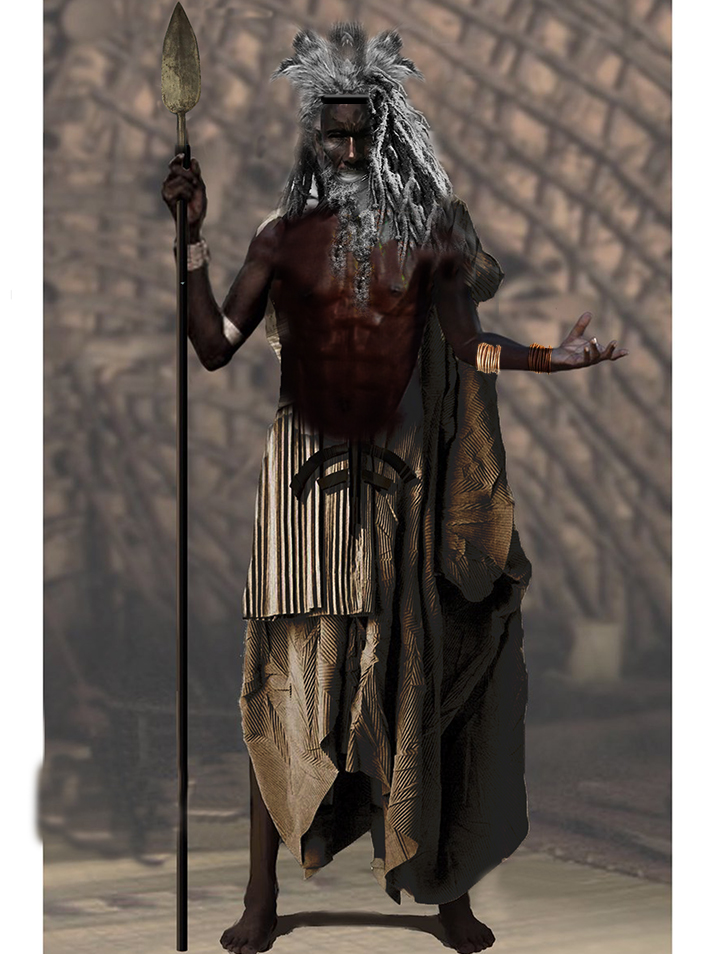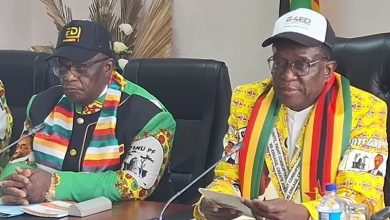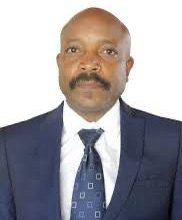The history of Chaminuka, the Great Prophet


Hailing from Dungwiza – the territory of long grass (Chitungwiza), the Prophet Chaminuka was a legendary Zezuru figure recognized as the most powerful spiritual leader of his time.
The unassailable messiah-like figure, and prince of peace, always advocated for a peaceful co-existence between the people of the land – now Zimbabwe.
Together with Murenga, Nehanda, Kaguvi, Mapondera, and Mukwati, they were the makers of Zimbabwe’s history.
Chitungwiza, was originally located on a fertile ridge in the traditional territory of the Hera people, between the Mupfure and Mhanyami rivers, extending as far as Mhondoro in the north-west and Hwedza Hills in the southeast.
The rich tropical soil of the fertile ridge yielded numerous cultigens and provided a rich productive life to its inhabitants.
Its most distinguished historical figure was Pasipamire, the pre-colonial svikiro (spirit medium) of Chaminuka; best remembered for predicting the British colonisation of the country and a hundred years of subjugation.
His first medium was Kachinda, though the most famous was Pasipamire.
Today, Chitungwiza is the largest high-density town in Zimbabwe, which includes several suburbs with a population of about 378 000, making it the third largest city in Zimbabwe.
As an urban conurbation, it came into existence in the late 1970s with most indigenous people who stayed in the oldest high-density towns like Highfield migrating to Chitungwiza.
Here, as a boy, Chaminuka’s favorite place in Chitungwiza was a rock where he sat, under the canopy of the muisha tree.
This tree (parinari curatellifolia) is a tree of spiritual significance for the Shona, used to conduct mukwerera/marenje or rukoto – rain-asking ceremonies that are normally conducted at the beginning of October.
It was also the site where he would sit and compose, play, and sing his spiritual mbira music – VaChaminuka vaive muvambi nemukwenyi wenziyo dzembira dze pasichigare. This spot came to be known as dungwiza raChaminuka.
A military strategist, warrior, prophet, musician, and poet, he was erroneously described as a ‘minstrel’ by the colonisers.
Chaminuka was a mbira maestro, adept at his skills, inspired by the Divine – VaChaminuka vaive gwenyambira/ bandambira aive nemukurumbira yeku ridza mbira dze pasichigare nemazvo, dzavayipuwha nevadzimu – his music still resonates in contemporary post-modern mbira music today.
Commendably, contemporary Zimbabwean mbira musicians Stella Chiweshe, Dumisani Maraire, Thomas Tafirenyika Mapfumo, Chiwoniso Maraire, Victor Kunonga and Hope Masike immortalise Chaminuka in the lyrics of their music as a legacy of our heritage.
However, legends still abound about his power over animals. Stories about the tame pythons and other snakes that he kept at his homestead; of antelopes romping confidently about his dwelling, and eagles that spoke to him and his celebrated bull, Mindudzapasi, who, at his command, would piaffer, lie down or get up, are still told.
But the historical facts surrounding the life of Chaminuka speak tangible volumes of truth.
Chaminuka Rwizi III, originally Pasipamire Tsuro, born circa 1808, was the son of Rwizi II, Watambwanaye, chief at Chitungwiza. He died in 1883. Below is a brief genealogy of the Rwizi clan:
Totem = Shava Mazarura = Eland
Rwizi I – (c.1714-1754
Garawe – 1742 – 1778 = Mukanganise /Mufambi / Garikai / Bembwe
Bembwe (1770-1802) = Tsuro
Tsuro (1786-1814) = Bute I (c.1814) / Karwizi (1838-1866)
Watambwanaye Kaverenga = Rwizi II
Rwizi II Watambwanaye = Jekawacheka / Masunika / Chounda / Madzorera / Mudimuranwa / Pasipamire Tsuro (Chaminuka Rwizi III c.1808-1883)
The original Chaminuka belonged to the vaTovera lineage of the earliest known ancestor of the Shona according to their genealogical history.
Tovera’s son, Mambiri, is the father of Murenga Sororenzou, the founder-architect of Zimbabwe and guardian of our land.
Murenga’s children included Chaminuka and Nehanda.
Chaminuka was the father of Kutamadzoka and Chigwangu, the first two rulers of Zimbabwe.
He played a significant role through his prophet Pasipamire, as a messenger of humanitarian values, of peace, harmony and cohabitation that united the African people as the nation we know today.
Chaminuka’s son Kutamadzoka became the First Mutapa.
After his death, his brother Chigwangu became Mutapa II and moved to Great Zimbabwe from Mapungubwe, the original settlement in southern Africa after migrating from Guruuswa, Tanganyika (Tanzania).
Here, Chigwangu became known as Rusvingo – Builder of Stone Walls.
A great chief and prophet, Chaminuka’s phenomenal fame was associated with miracles, healing and rain supplication.
In his time, his reputation was so widespread that hundreds of pilgrims flocked daily to the holy city of Chitungwiza to seek his advice, his healing and his blessing.
The entire country of Mambo (Mbire), honoured, revered and craved his wisdom and counsel.
The magnanimity of his spirit and his genuine display of love for humanity, of peace in his heart and of compassion for the poor and the suffering, but most importantly his lack of malice, animosity and vengefulness, made him a man beyond reproach.
The name Mbire has been used in the past to refer to all of the ethnic groups of Zimbabwe prior to 1830, namely: VaKorekore, VaZezuru, VaKaranga, VaManyika, VaNdau, BaNambiya, BaVenda, and BaKalanga. The Mbire family forms the root of all these people of which Chaminuka was a distinctive member, along with Murenga, Mambiri and Tovera.
Chaminuka’s powers were especially manifest during conflicts with Lobengula, at a time when European colonisers were invading from South Africa; forcing local African clan groups to migrate northward and come into conflict with each other.
Repeated messages of peaceful coexistence and harmony among the people, sent by the ancestors through Pasipamire, were continually ignored by Lobengula who recurrently attacked the Shona people to subjugate them and take away their land that belonged to the Mbire.
In time, Chaminuka also prophesied to the Ndebele that they “…shall be accursed and famine-stricken as punishment from the wrath of the ancestors” for killing him in Bulawayo (Kobulawayo – The land of slaughter).
True to his prophecy, Bulawayo has since experienced many droughts.
Shona people believe there are spirits of varying levels of importance under the one God – Mwari.
Of these spirits, Mhondoro are the most important, of which Chaminuka sat on the apex of the national hierarchy of Mhondoro spirits, who may only be approached through the intersession of a chief, indirectly through a medium.
Chaminuka was one of the leading Mhondoro spirits of Zimbabwe in the 19th Century.
The Chaminuka spirit was a pervasive influence during the First Chimurenga of 1896-1897, as were Sekuru Kaguvi and Mbuya Nehanda.
Later mediums have maintained the great popularity of Chaminuka and the great spirit also became an inspiration to early nationalist leaders, fighting colonial oppression.
Chaminuka foretold of the coming of knee-less people (Vasina mabvi), meaning white people, into the country.

Chaminuka’s role as a prophet of peace is a legacy Zimbabweans, as a peaceful people, inherited.
He spoke of prosperity, peace and goodwill. He brought the communities together and the people thrived.
Around 1896, there were a succession of unnatural events foretold in Chaminuka’s prophecies.
Many say his prophecies were true and accurate.
The year 1896 was one of drought, coupled with a severe locust plague that devastated the crops and rinderpest struck the cattle.
That same year saw a total eclipse of the moon that was also predicted by Chaminuka, who also prophesied the downfall of Lobengula and the arrival of the European Pioneer Column.
An unusual characteristic of Chaminuka was that he migrated from one tribe to another each time his medium died, and this has led to his activities being recorded among all the Shona people.
In a book by Solomon Mutswairo, Chaminuka declared: “Oh people of Chitungwiza, fearful of your lives and for those of your children, understand – I repeat – that there shall come from the sea a race of people without knees who are stronger than the tyrant Ndebele. They will subdue your enemies and will pursue Lobengula to his shameful death. Then these knee-less people will build white houses on the land. They will bring with them a mighty boulder, such as has never been seen before. It will roll with such force, that no one will be able to stand before it, or divert it from its course”.
Chikunguru chedombo chairewha navaChaminuka chaive chitima nenjanji dzevauyi vechichena.
Here, Chaminuka’s prophecy was referring to the railway line and train. He had foreseen Cecil John Rhodes’ dream of a railway line ‘From Cape to Cairo’ and the lines from Vryburg, through Mafaeking, to Bulawayo and from Mutare straight across Portuguese territory to Beira 290km away, in his bid to colonise Mozambique.
He continued: “These knee-less people will rule the land with an iron fist, and will not respect our customs. Their knowledge will pour over the people and entice the young to abandon our traditions, which will consequently grieve the ancestors. The ancestors will in turn give our children up to the tyranny of the strangers. In suffering shall their strength lie. Yet the land shall remain the everlasting legacy of the Mbire and not of the strangers within their domain.
So, I will plead with the ancestors for a stronger leader to opposes the stranger, to restore the land of the people of Mbire and to recall our former glory.
Do not therefore, be afraid of Lobengula or the knee-less people, but be prepared for the good times that will come thereafter”
Some who listened were satisfied with the prophecy, but many did not understand.
Looking at his sister Nehanda, Chaminuka said: “As for you, my sister, your fate is no different from mine. All who wear the veil that the ancestors have been pleased to bestow must drink the bitterness of gall at the appointed time. You are no exception.”
Here he was referring to Mbuya Nehanda’s fate at the hands of the colonial settlers who hung her a decade-and-a-half later, on Kumbvumbi (April) 27 1898; a day Zimbabweans need to honour.
Finally, to the citizens of Chitungwiza he said: “Let my spirit be freed now, so that I may go in peace to the land of our ancestors and to plead for our safety and preservation.”
Chaminuka was an advocate of peace and compassion. His model of humanitarianism has been supported by both oral and written records.
African history has for far too long being marred by settler colonial derogatory accounts and misconceptions. As we commemorate our independence and muse over Easter, Zimbabweans should vigilantly guard the history, traditions and heritage of our nation.
Chaminuka is more than a legend; he is the truth and future of our children’s development and empowerment. He should be part of our tangible heritage.
In Chaminuka’s own words: “Then the spirit said; this land (Zimbabwe) is given to us in trust, and no stranger will ever be permitted to take it away from the children of Nembire. It is an inviolable legacy for us and our children’s children. Love is as much a tool for peace as war is for destruction …. Love builds, but war destroys. We, people of Mbire would rather build than destroy, and the svikiro of Chaminuka is here to declare this. Our ancestors are our true guardians and it is they who said that no man can build a home with a stick – meaning that war and hostility cannot build a nation.”
This great prophet, gombwe renyika, military architect, healer and leader has only been acknowledged by a military wing, named Chaminuka, during the Zimbabwean liberation struggle; the now defunct first all-African indigenous rugby team of the mid-1980s named Chaminuka XV; a Government building in Harare and a few out-flung roads which bear his name.
Chaminuka is a vanguard spirit of Zimbabwe!
Dr Tony Monda holds a PhD in Art Theory and Philosophy and a DBA (Doctorate in Business Administration) and Post-Colonial Heritage Studies. He is a writer, lecturer, musician, art critic, practicing artist and corporate Image consultant. He is also a specialist post-colonial scholar, Zimbabwean socio-economic analyst and researcher. E-mail: tonym.MONDA@gmail.com




